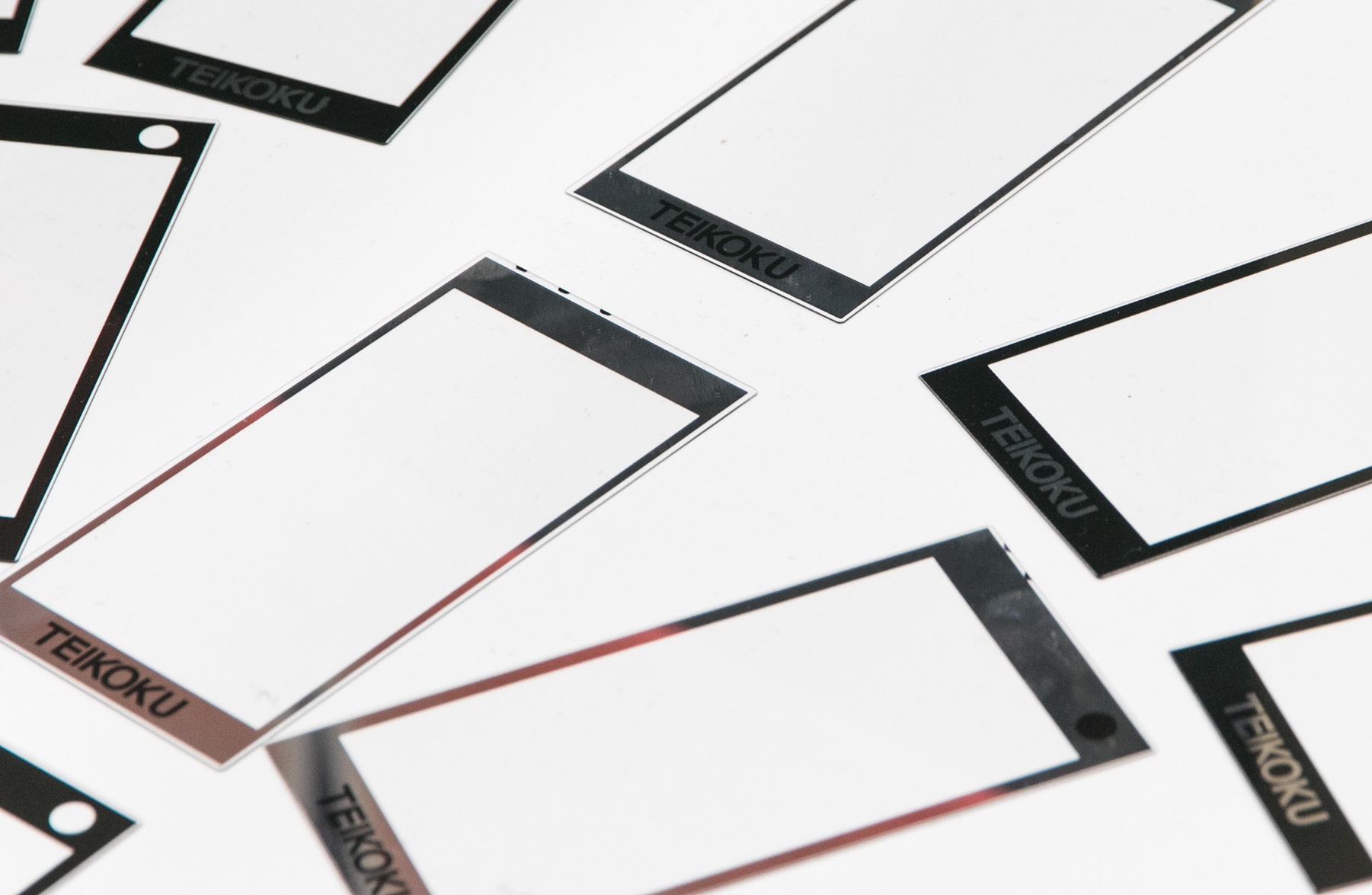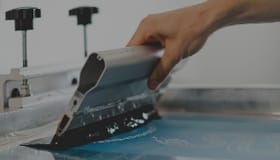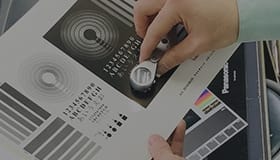Product overview
MIR-9100 Mirror Silver ink is a screen printing ink that forms a high brilliant mirror surface and has good stencil stability. Printing on polycarbonate and treated PET materials is possible, with excellent opacity and mirror surface formation equivalent to that of silver vapor deposited film.
- Functional ink

Application
- Display panels for home appliances, membrane switches, product logo
Features, Function
- Superior mirror surface forming is possible
- Glossy mirror surface can be created by printing on the necessary areas, making it suitable for a wide range of printing applications.
- Due to its high viscosity and stencil stability, suitable for outline character and convex letter printing.
- Mirror
Substrate
- Various polycarbonate, treated PER materials
- PC
- Easy adhesion treated PET
Dilution
- C-002 SOLVENT Dilution: 0 to 30%
- *Do not use other solvents as they may adversely affect mirror surface, adhesion, stencil stability, or other properties
Catalyst, Promoter mixing
- 106 CATALYST 0 to 1% Pot life: 4 hrs.
- *Use catalyst to improve adhesion to hard-to-bond substrates (hard coat substrates, etc.). Please mix only the amount to be used.
Recommended cleaner
- Screen Cleaner L2
Mesh
- T 250 to 300 mesh(Coverage is about 40 to 50m2/kg at 250 mesh)
Drying
- 80℃ 30 min
- Over print
MIR 50 to 80℃ 30 min(tack-free)
Back print 80℃ 30 min
Caution
- Defoamer may separate over time, mix well before use.
- Printing must be done the following order. Firstly, print design with ink suitable for the substrate, secondly, print Mirror ink, and finally, print masking ink. Use “MIX-HF Ink or MIB Ink” for back print.
- Ink layer thickness should be 3μm or less. If ink is thicker than that, delamination may occur between the back-print ink.
- Heated drying is strongly recommended. More than 30 min at 50℃ is necessary.
- When printing on PC substrate, heating at more than 60℃ or higher while the ink layer is wet may cause whitening of the substrate.
- When printing on PET, the drying temperature does not affect whitening of the substrate. However, special substrate such as A-PET will be whitened.
- Ink viscosity increases after printing. Do not add used recovered ink to unused ink, transfer it to another container, add C-002 solvent to dilute ink up to the viscosity of unused ink before use.
- Ink shelf life: 6 months from production date, unopened.
Safety
- UN No.: Not classified in the definition
- UN Classification: Not classified in the definition
Handling
- Use safety gloves and eyeglasses to protect skin and eyes. If the ink comes in contact with skin, wash with soap and plenty of water (or lukewarm water) and consult with a doctor.
- Containers should be closed tightly after use and stored in a cool and dark place.
- SDS is available upon request. Please request a copy and read it carefully before handling the products.
- *Information contained in this catalog may change without prior notice.
FAQ
-
What is the recommended screen stencil?
-
The finish of mirror ink prints varies depending on the type of screen stencil used. The items of a screen stencil suitable for printing mirror ink are stencil mesh, opening, line diameter, and emulsion thickness. Recommended conditions for printing stencil are a stencil mesh of T-300, a wide opening, a narrow line length, and a thin emulsion thickness (6 to 8 µm).
-
What is the information on printing conditions that affect mirror effect?
-
Printing pressure and doctor pressure are important in printing conditions. Mirror ink provides mirror effect and opacity by orienting aluminum pigments. Therefore, in order to orient the aluminum pigments, the printing pressure and doctor pressure should be set higher than for general solid inks.
Thicker film thickness (3μ or more) may cause delamination in the aluminum layers. In addition, mirror surface will be reduced, causing unevenness. As for opacity, thicker film thickness improves opacity, but if the aluminum pigments are well oriented, opacity can be obtained even with a thin film thickness.
Stable quality (mirror effect and opacity) of printed materials can be obtained by printing recommended conditions described in 1-2 Screen stencil, 1-3 Squeege, 2-2 Drying conditions, and 2-3 Printing conditions.
- Related technical information
- Related inks

